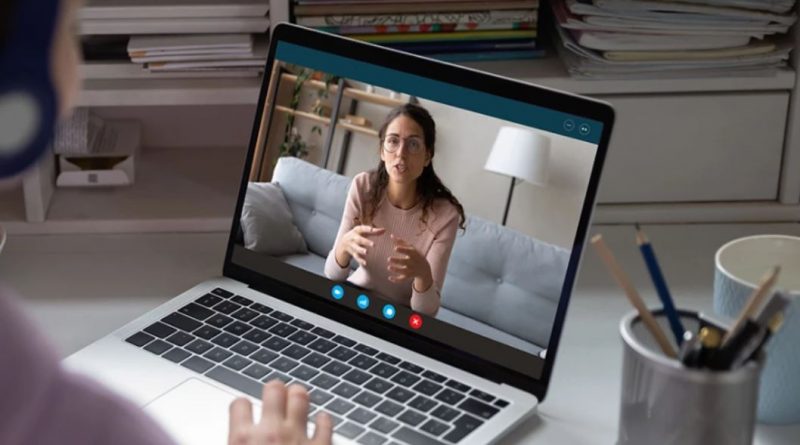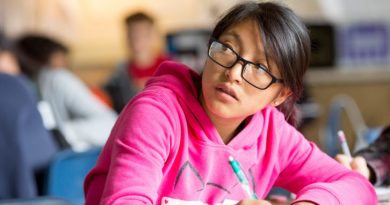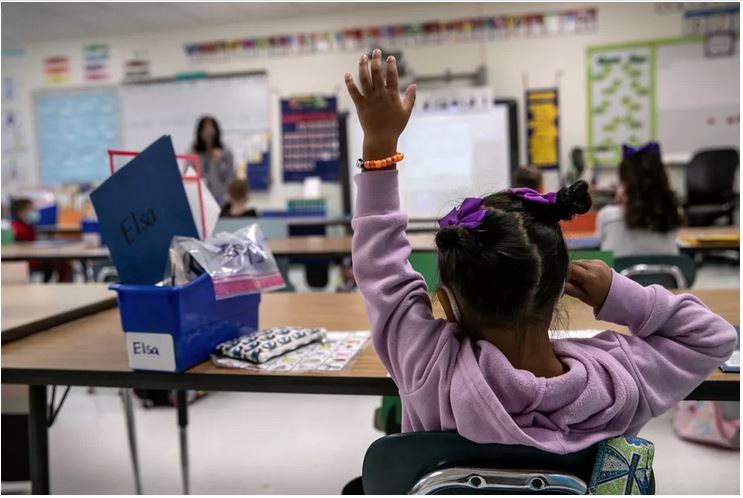Most Students With Disabilities Still Attend Remotely. Teachers Say They’re Falling Behind
Most students with disabilities are still learning remotely during the pandemic, and new research suggests that may not be an ideal learning environment for them—even when they receive the same supports that would traditionally help them in an in-person classroom.
While teachers of students with disabilities in remote classes were as likely or even more likely than colleagues teaching in-person or hybrid classes to report that they were providing students with weekly small-group and one-on-one instruction, they were far more likely to say their students weren’t completing assignments, according to a new nationally representative survey conducted in the fall by the research firm RAND Corp.
The survey included nearly 1,600 general and specialized teachers who work with students who have special education plans under IDEA or Section 504 of the Rehabilitation Act of 1973. Two-thirds of the teachers felt that they were less able to meet the requirements of students’ individualized education plans and provide the support that their students needed when they were teaching remotely.
“The pandemic has caused major disruptions in education, but there’s concern that those disruptions may hit the nearly 7 million students with disabilities in public schools particularly hard,” said Laura Stelitano, a RAND associate policy researcher and a co-author of the study. The findings “raise the concern that students are receiving small-group and one-on-one instruction, but maybe the quality of that instruction or their ability to actually access it or learn from it is questionable.”
A large majority of teachers in in-person, hybrid and fully remote schools reported they were supporting students with disabilities through individual and small-group instruction at least once a week. But while 51 percent of in-person teachers reported their special education students completed nearly all of their assignments, only 29 percent of remote teachers and 32 percent of hybrid teachers said the same.
“So many teachers spoke to the challenge of just reaching their students, engaging them online, knowing if they were understanding,” Stelitano said. “So I think, before you can really deliver that effective, specialized, tailored instruction that students with disabilities need—and may have been already receiving in schools, in person—you need to just be able to reach them, know that they’re there on the other end of the computer or phone and that they’re understanding.”
Many states not prioritizing in-person learning
Nationwide, students with disabilities still are not necessarily prioritized for in-person learning as schools return to school, even as many schools prepare to reopen. According to the most recent data, from March, from the U.S. Department of Education’s Monthly School Survey Dashboard on pandemic education practices, 45 percent of schools containing 4th grades and 52 percent of 8th-grade schools reported prioritizing students with disabilities for in-person learning as part of their reopening plans. That’s an increase from the first months of 2021 when only 42 percent of 4th-grade students with disabilities learned in person, but the share of students varies greatly from state to state and district to district.
For example, while Boston, Fort Worth, Texas, and San Diego, Calif., public schools reported they prioritized all students with disabilities for in-person instruction, the District of Columbia have moved only 66 percent of its special education students to in-person learning, and Albuquerque, N.M., Clark County, Nev., and Philadelphia had virtually no students with disabilities learning in person.
Source: https://www.edweek.org/teaching-learning/most-students-with-disabilities-still-attend-remotely-teachers-say-theyre-falling-behind/2021/04




